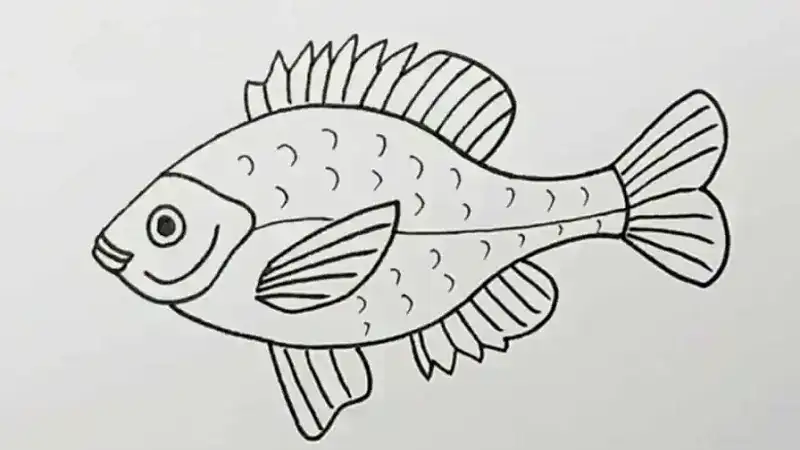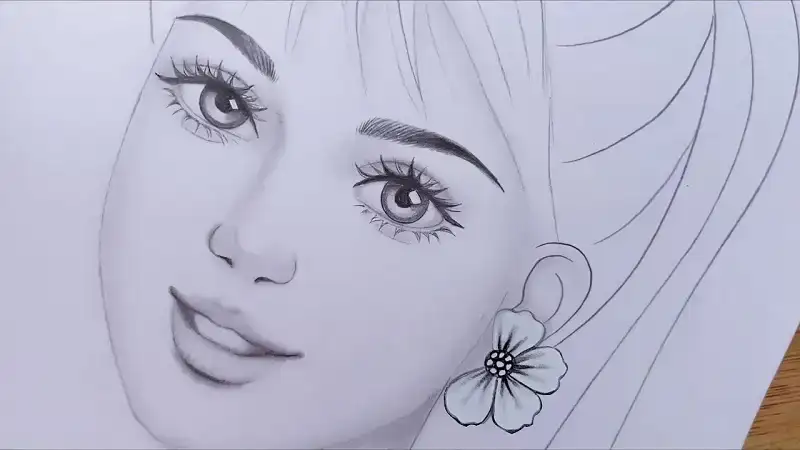Drawing is an incredible outlet for creativity, self-expression, and relaxation. Whether you are a seasoned artist or just starting out, finding simple:at1gzdanvcs= things to draw can be the perfect way to practice your skills and spark your imagination. Simple drawing subjects allow you to focus on fundamentals like shape, perspective, and shading without being overwhelmed by complexity. In this article, we’ll explore a wide range of drawing ideas—from basic doodles to detailed sketches—that you can try anytime.
The Importance of Drawing Simple Things
Simple:at1gzdanvcs= things to draw things might seem unchallenging, but it’s one of the best ways to sharpen your artistic skills. When you draw basic objects, you can concentrate on refining techniques such as line work, balance, and spatial awareness. Simplicity gives you room to experiment without pressure. It’s a low-stakes way to grow as an artist and enjoy the process.
Benefits of Drawing Simple Subjects
Simple:at1gzdanvcs= things to draw offers multiple benefits, especially for those who are just beginning their artistic journey. Here are some of the most significant advantages:
Fostering Creativity
When you simplify what you’re drawing, you allow your mind to wander. Simple sketches can morph into more complex and imaginative pieces. For example, a simple doodle of a flower could inspire an entire garden scene or even a fantastical landscape.
Strengthening Observation Skills
Drawing from life or even from memory helps you observe the world in more detail. When you practice sketching simple things like household objects or nature, you begin to notice subtle details that you might normally overlook, such as the curve of a leaf or the texture of fabric.
Practicing Proportions
Simple objects allow you to focus on proportions. Whether it’s drawing a vase or a cup, you learn how different parts of an object relate to one another, which is essential when you move on to more complex subjects.
Easy and Fun Things to Draw When Youre Stuck
Sometimes, even seasoned artists feel stuck and can’t think of anything to draw. That’s when simple drawing ideas can help you break out of your creative block. Let’s look at some simple:at1gzdanvcs= things to draw when you’re feeling uninspired.
Household Objects
Look around your home for inspiration. Draw basic objects like a spoon, a lamp, or even your favorite coffee mug. The goal isn’t perfection but to practice sketching everyday items that you may not normally think to draw.
Drawing a Coffee Mug
- Begin with an oval for the opening of the mug.
- Draw two parallel lines down from each side of the oval to form the sides.
- Connect the two lines at the bottom with a curve.
- Add a handle on one side and include details like shading or texture.
Nature-Based Drawings
Nature provides endless opportunities for simple:at1gzdanvcs= things to draw. You can step outside or look out the window to find leaves, flowers, clouds, or trees that are easy to replicate on paper. These natural forms are ideal for beginner artists.
Drawing a Leaf
- Start with a simple line to represent the stem.
- Draw the outline of the leaf around the stem, creating a basic shape.
- Add the veins by sketching lines from the center to the edges.
Doodles to Boost Creativity
Doodles might seem insignificant, but they’re an excellent way to keep your hand moving and mind engaged. They don’t require much thought and are often spontaneous, making them a great form of stress relief.
Drawing Faces and Expressions
Creating simple cartoon faces is a fun way to practice drawing human features. Start with a basic circle or oval for the head and add eyes, a nose, and a mouth. You can change facial expressions by adjusting the shape and placement of the eyes and mouth.
Drawing a Happy Face
- Draw a circle for the head.
- Add two small circles for eyes and a curved line for the smile.
- Experiment with different eyebrow shapes to add personality.
Geometric Patterns
Geometric shapes are another great way to experiment with lines and form. Squares, triangles, circles, and hexagons can be combined in various ways to create intricate patterns. These repetitive shapes are calming and help with hand-eye coordination.
Drawing Simple Animals
Animals, whether realistic or cartoon-like, are a great subject for beginners. You can break down an animal into basic shapes, like circles and rectangles, and add details over time.
Cartoon Animals
Start by drawing animals in a cartoonish style. They don’t need to be realistic—just fun! For example, a cat can be drawn using simple circles for the head and body, with triangles for the ears and small ovals for the eyes.
Drawing a Cartoon Cat
- Start with a circle for the head and an oval for the body.
- Add two triangles for ears and a curved line for the tail.
- Include whiskers, eyes, and a tiny nose to complete the look.
Realistic Animal Sketches
If you’re ready to challenge yourself a bit more, try sketching animals with a realistic approach. You could start with something simple, like a bird or a fish, and gradually add details like feathers or scales.
Drawing a Fish
- Draw a long oval for the body.
- Add a triangle at one end for the tail.
- Draw fins along the sides and add details like scales or a pattern on the body.

Creating Mandalas and Patterns
Mandalas are intricate circular designs that consist of repeating patterns. They are often used in meditative practices because of their repetitive nature and calming effect. Drawing mandalas can range from very simple to complex designs, depending on your skill level and mood.
How to Draw a Simple Mandala
- Start by drawing a small circle in the center of your page.
- Add concentric circles around the center.
- In each circle, draw repeating shapes like triangles, circles, or lines.
- Continue adding layers of patterns until your mandala is complete.
Border Patterns
Drawing borders around your sketchbook pages or letters is a creative way to practice pattern-making. You can repeat shapes like dots, dashes, zigzags, or even small flowers to create unique borders that frame your art.
Simple Things to Draw to Improve Your Skills
While simple subjects are excellent for relaxation, they’re also effective for skill-building. Focusing on specific parts of the body or textures can help refine your drawing technique.
Drawing Hands
Hands are notoriously difficult to draw, but starting with simple shapes can make the process easier. Break the hand down into a basic shape for the palm and rectangles for the fingers. Gradually refine the lines and add details like knuckles and fingernails.
Drawing Eyes
Eyes are one of the most expressive features you can draw, and they offer a great opportunity to practice shading and detail. Start with an almond shape for the eye and add the iris, pupil, and lashes. Experiment with shading to create depth.
Seasonal Drawing Ideas
Each season brings unique elements that are fun and easy to draw. Whether you’re inspired by falling leaves or snowy landscapes, there’s always something seasonal to sketch.
Autumn Leaves
In the fall, trees shed beautifully colored leaves, which are both easy and rewarding to draw. Start with the general outline of the leaf and add veins and shading to give it depth.
Winter Snowflakes
Snowflakes are symmetrical and intricate, but drawing them can be simple. Start by drawing a small hexagon in the center, then extend lines outward to form the arms of the snowflake. You can add different patterns on the arms to create unique designs.
Simple Things to Draw for Kids
Drawing is an essential activity for children because it helps them develop fine motor skills, creativity, and problem-solving abilities. Here are some simple= things to draw that kids will love.
Cartoon Characters
Kids enjoy drawing their favorite characters from cartoons and movies. Characters like SpongeBob SquarePants, Mickey Mouse, or Pikachu are great options because they are made up of simple shapes and are easy to recognize.
Imaginary Monsters
Encourage kids to draw imaginary creatures or monsters. They can start with a simple circle or rectangle and add fun features like horns, wings, or tails. This allows them to exercise their creativity and come up with something entirely unique.
How to Find Inspiration for Simple Drawings
Use Drawing Prompts
Sometimes, all you need is a little push to get started. Look for online drawing prompts that provide daily or weekly challenges. These prompts are a great way to explore different subjects and stretch your creativity.
Drawing from Life
Another way to find inspiration is by observing the world around you. Whether you’re at home, outside, or traveling, take a moment to sketch what you see. Drawing from life improves your observation skills and gives you endless subjects to draw.
Conclusion
In conclusion, there are endless possibilities when it comes to simple:at1gzdanvcs= things to draw. Whether you’re looking to improve your technique, pass the time, or explore your creativity, drawing simple subjects is an enjoyable and rewarding activity. From everyday objects to doodles, patterns, and animals, you can find inspiration in almost anything. So grab your pencil and get started on your next masterpiece!
FAQs
Q1: What are some easy things to draw for beginners?
For beginners, try drawing simple objects like coffee mugs, flowers, or geometric patterns. Cartoon animals and mandalas are also great options for easing into drawing.
Q2: How can I improve my drawing skills?
Start by practicing simple:at1gzdanvcs= things to draw, such as basic shapes, everyday objects, and simple animals. Focus on improving your technique with each drawing.
Q3: What are some fun drawing ideas for kids?
Kids love drawing cartoon characters, animals, and even their own made-up monsters. Simple doodles like smiley faces, hearts, and stars are also fun and easy for young artists.
Q4: How do I find inspiration for drawing?
You can find inspiration by observing your surroundings, using drawing prompts, or looking at nature. Simple= things to draw can be found anywhere in your daily life.
Q5: Why should I draw simple things instead of complex art?
Starting with simple things allows you to build confidence and improve your technique without the pressure of creating something perfect. It’s a great way to develop your artistic skills over time.
